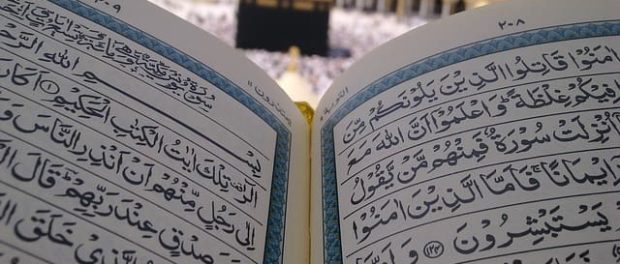This temple of Mecca called the Kaaba, is the object of veneration of Muslims and the purpose of their pilgrimage, it has, as its Arabic name indicates, a cubic form. It is built with gray stones, cut approximately into blocks of various sizes.
know more information about travel to mecca
Its length is about 14 m, its width and its height of 12 m. A single opening 2 m above the ground gives a staircase that is only applied during the pilgrimage period. The interior forms a large room, decorated with Arabic inscriptions and illuminated by solid gold lamps.
The marble floor is arranged in mosaics. Near the front door, the famous black stone is chained on the wall, probably an agate, which the faithful should kiss with respect and that marks the starting point of the so-called thaouaf tours.
Who built it?
According to legend, the Kaaba is only the reproduction of a temple in the same way located in heaven, it would have been built on earth, for the first time, by Adam, then by Abraham, assisted by his son Ishmael, since then it has been restored several times and finally rebuilt by Ibn ez-Zobeir in 684.
The angel Gabriel himself gave Ishmael the famous stone, which was then a bright white, she would have turned black because of the impiety of the humans who impressed their kisses.
Definition and Importance
In fact it is a pre-Islamic monument, because already, before Muhammad, the Kaaba had been the object of veneration by the Arab tribes who had placed their particular idols there. There were no less than 360 that were destroyed by the Prophet when he dedicated the temple to the worship of the one God.
Despite the respect with which it always seems to be surrounded, the Kaaba was desecrated by the Karmathes, who even removed the black stone in 938, and did not return it until some time later. A large candle, called Kesoua, which is renewed every year, is located in the monument.
What is the Kaaba?
It is an immediate nearby structure in the Mecca, which also houses a large mosque, which makes it mentioned in the Qur’an and, later, in the Muslim tradition such as the House of God (bayt Allah) and the Sacred Mosque (masjid al haram). The Kaaba is the orientation point for Muslims when they pray, and it is also the meeting point of the pilgrimage (Hajj), as well as the Umra (secondary pilgrimage). The Hajj takes place in a fixed period in a prescribed month, while the Umra can be made at any other time of the year.
The Origin of the Kaaba
During the pre-Islamic period, the Kaaba served as a grave and sacred space (haram). The Arab and other tribes made annual pilgrimages to this place and visited it to honor the tribal and ancestral deities that included many gods and goddesses. Representatives of these deities remained in the Kaaba, and these ritual visits were often accompanied by music, dance and poetry recitation.
What is its importance for the Mecca?
The Prophet Muhammad was forced to leave the Mecca due to the oppositions he encountered both for his preaching and for his actions against many tribal practices and values, only for his declaration of being the messenger of a new revelation.
He emigrated to Medina in 622 BC but then negotiated to undertake a pilgrimage to the Mecca with his followers. In 629 BC, the Mecca surrenders, and the Prophet can enter the city again peacefully to free Kaaba from its idols, thus returning its original role as a symbol of the religion of Islam, monotheistic and reaffirming this place as the location of Hajj, an essential pilgrimage practice for the new faith of Islam.
The Kaaba is linked to the Prophet Abraham, with his wife Hagar and his son Ismail (Ishmael), probably originally established a place of devotion at this place. According to Muslim tradition, it is also the first place of worship.
The Prophet also instituted formalized practices for Hajj, thus connecting the Kaaba with other neighboring centers to form a set of pilgrimage rituals. With an irregular cube-shaped structure, the Kaaba is approximately fifteen meters high, ten long and twelve wide.
The four corners are aligned at the cardinal points of a compass. In one of the angles, in a silver mount is “La Pierre Noire” (the black stone when hajar to the aswad), which, according to the belief, is of ancient and miraculous origin. Pilgrims have a habit of kissing or touching it, and also begin to surround (tawaaf) the Kaaba during the pilgrimage they make from this place.
The Kaaba is usually covered with a black silk embroidered with Koranic verses, called Kiswa, which is replaced every year, a practice that began during the medieval Muslim period. It has an entrance and the interior is empty, but it is regularly purified and swept in a ritual that anticipates the Hajj.
Abraham’s maqam (stop) is located on the outskirts of the Kaaba. Therefore, the Muslim tradition believes that God instructed Abraham to establish the Kaaba as a place of worship. Nearby, to the east, is the ZamZam fountain, which is the direct link to the Abrahamic tradition in which water springs by the grace of God in response to the fervent prayers of Hagar. Its water is now distributed through a modern system of pipes and is available to pilgrims as it was in the ancient Muslim tradition.
The symbolism and meaning of Kaaba are part of the mystical Muslim tradition in which they play the cosmic role of the center of the earth. The Kaaba also serves as qibla (guidance for prayer), and Muslims also traditionally bury their dead faces in front of Kaaba.


